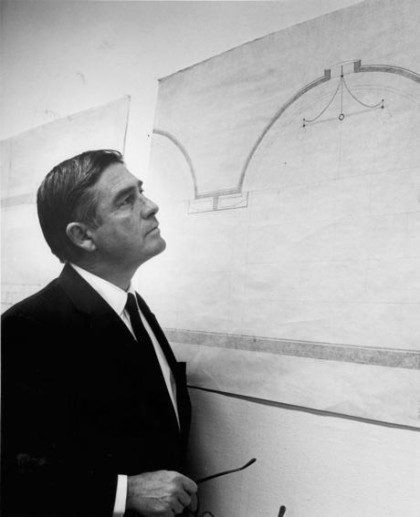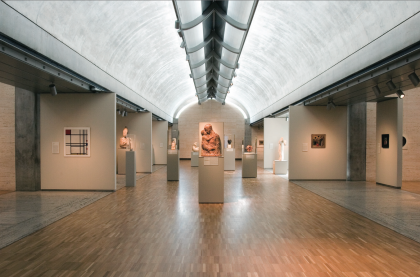I’m always struck by the list of credits in movies. I love the way that everyone who contributes to the success of the film gets acknowledged. Making a building requires the same kind of complex collaborative enterprise as making a movie, yet for some reason, we have this crazy convention of crediting only a single architect by name.
I’m writing an article for A+U about the Kimbell Museum in Fort Worth with the title: “Architecture is a Team Sport.” The University of Texas at Austin owns all the working drawings for the Kimbell, and we had an exhibition of some of them in Battle Hall last fall.
Duane Manning, the guy actually responsible for 90% of the drawings when he was a young architect, came to the opening. I was making the remarks there and commented about what a pity it is that he had not been recognized earlier for his contributions to the building.

This made me think about other people I’ve met over the years who also played critical roles in the creation of this amazing architectural landmark. So I went back through all my files on the Kimbell and tried to piece together some of the people and roles as source material for the article in A+U.
Richard Fargo Brown had an enormous impact on the design of the building. He was the first director of the Kimbell well before there was any architecture associated with it. He wrote a program for what he wanted in the museum that is an uncanny prediction of the building to come. Brown was the one who specified much of how the building would be articulated in its final form – that it should be low, flat and symmetrical, that it should be day-lit (in part by courtyards), and that its construction should be expressed explicitly as an important part of its architecture. “In the end that’s what we got,” he said.

Brown added, “Lou Kahn listened.” One must give credit to Brown for his vision and also to Kahn for his embrace of that inspired vision. The Kimbell does not have tall, monumental spaces like Dhaka, Exeter or the Yale British Art Center that Kahn typically loved at that stage of his career; instead, it was low and flat and modest, which is exactly what Brown conceived.

In the A+U article, I focus on one particular element of the Kimbell–the inventive skylights at the tops of the vaults and their reflectors. During the design phase, Marshall Meyer, a real leader in Kahn’s office, showed an early conceptual sketch to Kahn who liked it and presented it to the client. Richard Kelly, a lighting designer, changed both the general shape of the reflectors and the material they were made out of (from glass to perforated aluminum). The precise shape and performance were computer-modeled and revised again by Kelly and Isaac Goodbar. The perforations didn’t work well in the first two mock-ups and Frank Sherwood in Preston Geren’s office, associated architects on the Kimbell, resolved the problem by suggesting the perforations appear in some places but not others. The result is the magical light that really defines the experience and is a signature element of the Kimbell. It is hard to call this just a “Kahn” detail.

The point of the article is that architecture really is a team sport, and we should acknowledge that fact more than we do. The truth is that all buildings have many, many people seminally involved in their creation. Why are we so hell-bent on singular attribution? Why don’t we credit everyone in greater detail? At Page, we alphabetically list everyone on our website who was involved in a particular project. It is an explicit way of saying we’re all in this together.